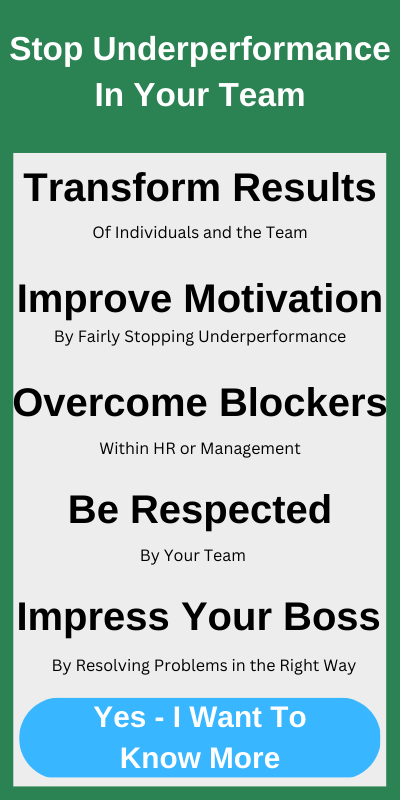How to Execute and Make Things Happen

How to execute and make things happen is the essential set of skills needed to turn ideas into reality. Many businesses place too much emphasis on those with good ideas which is maybe 5-10% of a solution. They don’t emphasis the execution skills needed to turn ideas into concreate action and results – the 90%+ of the solution and the hard part.
The good and great businesses understand the importance of execution skills – after all, they would not have become good or great without them.
If you have come across people who just seem to get so much done – personally and through their teams – and you wondered how they do it – chances are they have good execution skills.
In this article I share 8 key practical steps that will help you significantly improve how to execute and make things happen personally and through your teams.
The eighth step is probably the most important, yet is the step least well done by most managers. Put our tips into practice and significantly improve how to execute and make things happen.
How to Execute and Make Things Happen:
- Understand your people
- Get the right people in the team
- Define success
- Ask the team to plan how they are going to achieve the goals
- Assign one owner
- Create visibility
- Coach and mentor your team
- Relentlessly follow-up
Watch on YouTube
Listen on Podcast
Understand Your People – the first stage in how to execute and make things happen
Your team members will be delivering the project or the activity you have planned so understanding what they can and can’t do is pretty critical to success.
Make the time to personally get to know your team members on a professional level. What are their strengths and weaknesses. What are their ambitions, interests and so on? Are they self-starters who just need directing or individuals that you need to spend time checking up on and supporting?
Do you know your team well enough to get the best out of each person? When you do, you can assign the team members best suited to completing specific projects or activities. The team member might be best suited because they have a combination of:
- the right skills
- the right attitude
- their ambitions or interests are aligned with the needs of the project and thus, they will be more motivated to do the work and do it well
Work out how you can best use the people available to you, their skills, interests, and motivations to get the work done in the best way.
If you don’t have a team to manage or lead, then this step in getting things done is about going after the projects and activities best suited to your skills, ambitions, and interests and of course getting colleagues to deliver for you.
The second step in getting teams to deliver: Get the Right People in the Team
This is a difficult step, can’t be done in days or weeks, yet remains very important if you manage and lead any team. Your team members are going to be doing the work, therefore get the best staff you can.
You don’t ask a plumber to put in a new staircase. You ask a carpenter to do the work because they will do a lot better job, do it quicker with less cost. Match specific skills and expertise to solve a specific problem.
If certain team members don’t have the right skills, capability, motivation and attitude to do the job you need, then it is super important that you do what you can to change this situation.
Different ways to change or add to the skills in your team include:
- Hire people into your team with better or different skills as people leave
- Train or coach current team members to learn new skills or improve current skills
- Deal effectively and quickly with underperforming team members
- Hire consultants or temporary workers to undertake specific tasks, activities, and projects.
- Organise individual secondments from other teams within the business.
There may well be other options that suit your situation. Get the best team in place that you can and then do your best to improve their relevant skills. Both will help in getting teams to deliver. The work you put in doing this will pay you back many times over, personally and at a business level. Don’t settle for a poor status quo if you plan on being able to execute and make things happen.
Define Success – the third step in how to execute and make things happen
If you aren’t clear on where you are heading or what your goal is, how will you know you are going in the right direction? Don’t be tempted to jump into action until you have set out your goals and preferably put them into writing.
Spend enough time on defining your goals and communicating these to all the relevant stakeholders so you are confident that these goals are unlikely to be changed part the way through a project. Changing goals or having vague goals are great ways to waste time and effort and take longer to get to the result you want.
The more you align achieving team and company goals while achieving the individual’s personal goals, the more motivated that person – and the better off everyone will be – the individual, the team, and the business. It is easy said and much harder to put into practice – do take the time to align goals as much as possible to help drive better results.
Set out the goals clearly in writing before starting anything else.
Then define how you will measure your progress towards each goal you set. Measuring progress allows you to:
- manage team performance better
- manage expectations of stakeholders more effectively because evidence beats opinion
- you get an early warning if executing on your plans goes off track
- have a better indication of WHY the execution of your plan is off track
Make sure your goals are clear, get management and stakeholder buy-in to those goals and then work out how you are going to measure progress. Put the goals in writing so everyone has the same clear reference point.
The fourth stage in getting teams to deliver: Ask the Team to Plan how they are going to achieve the goals
You should include the team that will do the work in this step for several reasons:
- Their input will mean higher ownership, accountability, and motivation which nearly always translates into better execution
- Many minds are better than one when overcoming problems, generating ideas, challenging assumptions, and planning steps, particularly in complex or high risk projects or activities
- Everyone involved in the planning will understand what is needed much better than if they were just given the plan to read
When planning you should cover as a minimum:
- Where are we now?
- Where we want to get to
- What steps are needed to achieve the goal and when do these happen?
- Who will do each step?
- What resources are needed to make the plan a success?
If you are not managing a team, ask your manager or a colleague to go through the plan with you – looking for problems or weak assumptions. Giving stakeholders the opportunity to input into the plan can also be a good way of getting their support.
Assign One Owner – the fifth step in how to execute and make things happen
This owner will be responsible for delivering each part of or all of the project or activity depending on the size, complexity, and number of people involved.
Don’t be tempted to split ownership between two or more people. Doing so creates uncertainty as to who is responsible for what. Rather, take sections of a larger project and give specific ownership for each section to one individual. Keep an owner of the overall project to make sure someone is specifically tasked with co-ordinating all the moving parts.
With smaller or simpler projects you are likely to only need one owner or that person may be you.
Make sure that you and each owner are very clear about the goals and the expectations for what they are responsible for and how you, they, and any other stakeholders are going to know when each goal has been reached.
The sixth step in how to execute and make things happen: Create Visibility
No-one likes to look silly, be bottom of the pack or let others down. Humans are hard-wired through social rules to support and help the group. Plug into this by creating visibility.
Create visibility of progress by tracking:
- Project specific KPIs
- Actual results delivered against goals set
- Activity metrics against planned activity
- Milestones achieved against milestones planned
And put together simple reporting which can be shared. Keep the output easy to understand and read – graphical charts for instance are good for this.
Circulate your progress updates around managers, stakeholders and those colleagues working on making the projects and activities happen.
Visibility helps execution by helping
- Co-ordination
- Driving ownership
- Creating peer pressure
Creating data driven measurement of progress takes away a lot of the opinion led conflict caused by differing views and opinions of progress. Data is a lot more black and white, which moves the conversation towards how to solve problems and overcome shortfalls – rather than focusing on if there is a problem in the first place.
Visibility helps drive ownership, accountability and performance so make use of it when getting colleagues to deliver.
Coach and Mentor your team – the seventh stage in getting teams to deliver
Coaching and mentoring those in your team and executing projects is a hugely important investment to make. By investing your time in transferring your knowledge and skills to others, you are through your actions stating that the individuals are important to you, and how well they do their work is also important to you. Teaching and investing in others shows you care.
If you care about them, they are a lot more likely to care about what you want. If you try to make their working life easier and give them a path to promotion, more interesting challenges, social advancement, more pay etc they are much more likely to pay you back with harder work, more ownership, better results delivery, etc.
Both parties win. So invest your time to improve what your team does. Getting teams to deliver more helps everyone.
A simple example – if you spend your time teaching 5 people to fish, the six of you will catch a lot more fish than you fishing alone.
If you don’t manage a team, then invest time improving your skills – read books, watch videos, attend training courses, ask for 1 to 1s with your manager – do whatever you can improve your skills and experience. I have always felt that if you build the skills and experience, the promotions, money and everything else will follow one way or another.
Relentlessly Follow-up – the final step in how to execute and make things happen
The very action of following up on activities and projects signals to those undertaking the projects that achieving the goals are important to you. If you don’t follow up, you are by your actions signalling the opposite.
By popping round to speak to the person responsible or by calling them, you are able to offer your support while also getting an update on where the project or activity is. And you can use the same approach for their reports if applicable. Don’t overly rely on reporting.
Ask them to show you the progress rather than just tell you about the progress.
This is not about micro-management which you definitely need to avoid. Following-up is about making yourself available to help and support their work and by doing so, you are going to see for yourself the progress being made without coming across as though you are “checking up” on them.
You need to judge how much you follow up and how you do this, both of which will depend very much on what works best with each team member.
Trust and Verify
Trust the individuals to do their work but verify what you are being told and shown. This way, you will not get surprised, and you will be able to help when needed.
I have always found that speaking to individuals in person or on the phone is better than relying on emails – it is a lot easier to build a personal relationship with that person and you get a lot more information from them.
If you are not managing a team, you can employ the same approach in getting stakeholders and colleagues to deliver. Just remember, you must genuinely be offering help and be focused on helping them achieve their goals.
If the other person asks for help, then make sure you deliver for them as quickly as practical. There is no better way to build trust with that person.
No matter how busy you are, make the time to follow up as regularly as you need to so ensure:
- You know what is going on at all stages
- There are no surprises
- Those doing the work are not held up or become unsure of what to do next
- The project team feel you are there to support them
If you follow and practice these steps, you will improve what you deliver and will get much better at getting teams to deliver more.
In summary
Knowing how to execute and make things happen is essential for all managers, leaders, professionals and business owners to learn how to do – if you want success with your career and business. Execution in business separates those with great ideas from those that made those great ideas into a great business.
Practice how to execute and making things happen and your career and business will thank you for it.
Most of us can get things done ourselves. Where many managers struggle is getting others to execute on what we want to get done. The skills of persuading others and following up to ensure a project is completed or an idea is turned into reality are execution skills.
Execution skills are vital for managers and a very under published and valued skill in many companies. The top performing companies are good at executing – they have to be.
Good execution skills are all about the people. Enjoy getting more done!










